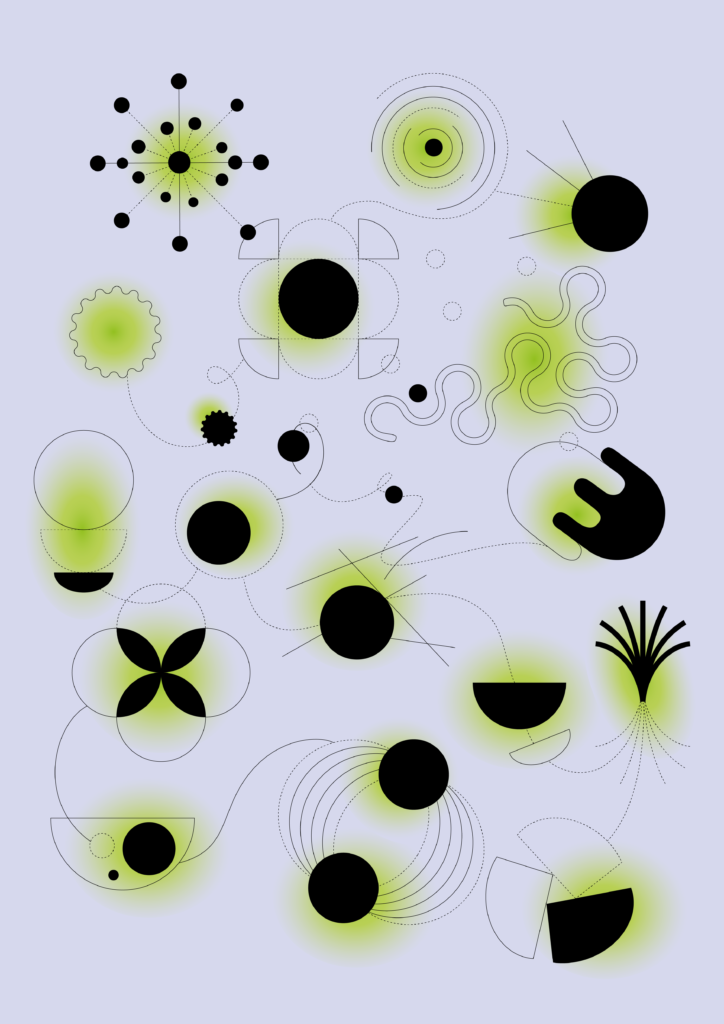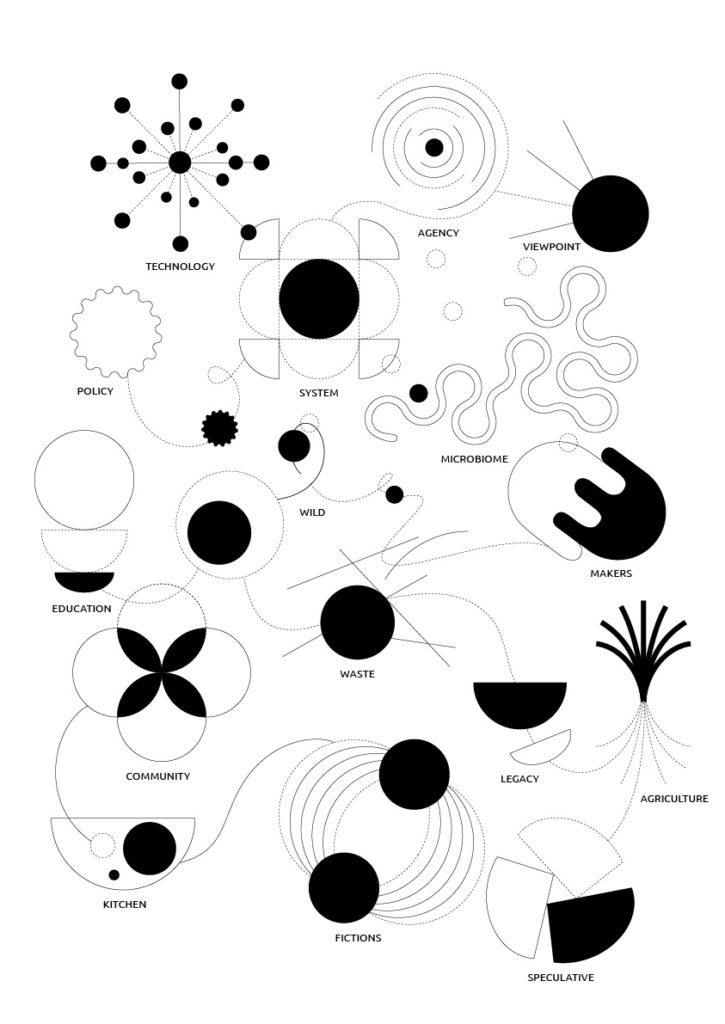In the fields of design and architecture, thinking about objects has shifted to thinking about systems and the vocabulary used has been changing too. The same can be said for food.
We should no longer just think about an apple, for example, without acknowledging the origin and type of cultivar it grew from, the place it was grown in, the land it was grown upon, the water, light and soil used to nourish it, perhaps the pesticides and fertilisers sprayed on it, the working conditions of the person who harvested it, the way it was packed, stored and transported, how, when and where it was sold, who ate it, or the recipe used to cook it, what happened to the waste and even whether it should have been an apple in the first place instead of, say, a plum. And equally none of the elements in the cycle of that apple should be taken individually, but as all part of a single system (which is in turn connected to other systems), perhaps represented by the apple, or perhaps by the recipe used to cook it.

And because everything to do with food is part of all sorts of systems and cycles, perhaps, when discussing these systems, we should not try and corral them into individual disciplines either. When we talk about food, it is not just science, it is not just storytelling, it is not just design, art, business or politics, it’s all of those things and more – together and interconnected – and so needs to be approached in an interdisciplinary way.
Therefore, in order to talk about food and food practice today, we also need a vocabulary that not only acknowledges and reflects but also allows us to comprehend and cope with the dynamic complexity of the systems involved. At The Common Table, we believe that food publishing should lead the way in this by moving beyond big, flat, umbrella terms such as sustainable (for whom? in which system? at what cost and what benefit?), authentic (from whose point of view? with what restrictions? with what flexibility for future adaptations?) or local (since when? for whom? at what cost?).

Such words, in our view, only serve to ease the over consumer’s conscience, not to initiate dialogue around or improvement of broken food systems. Therefore we need to search for the right words in order to communicate these new ideas, systems, practices and methods so that they can not only proliferate and be shared and discussed but also tested and challenged as transparently as possible.
At The Common Table, our new Categories system represents the first step in this process. Here, we cluster the patterns and themes that emerge through our conversations with food-future pioneers in as non-linear a fashion as possible, allowing stories to fall into two or more keyword groups, represented by our own pictograms, which signify aspects of the food system. By being combined in this way, like flavours, these words become enhanced, e.g. “Community Viewpoint”, “Kitchen Legacy” or “Speculative Microbiome”. Thus the cycle of elements in and around the food system we live, produce and consume within is interconnectable in myriad ways.
If humanity really wants to create better futures, it can. With The Common Table, our goal is to strive to commission and publish constructive content; content from a hopeful perspective that balances criticism with ideas and investigation into what can be done.
We need to picture the better world we want and work our way towards it, together. So let’s keep talking about it. Join us at The Common Table with your suggestions, questions and critiques. And explore our new categories here.
Sophie & Orlando Lovell






